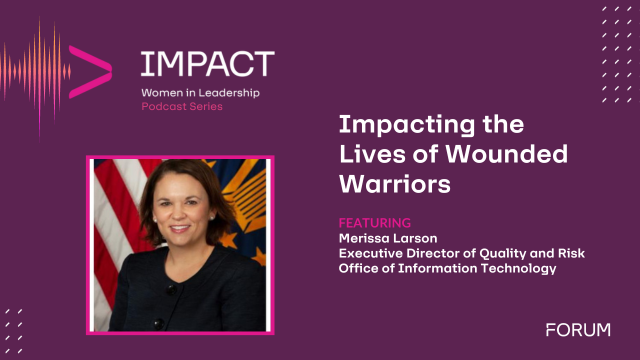Cyberpunk. In the 90s, futurists promised a 21st Century in which man would be seamlessly merged with machine, UI/UX would be seamless, and the Internet would be a tool for communication and education. Instead, we have Google Glassholes, Alexa spies on us and the Internet is a giant public access TV station. What happened and how can we get the right interface between human and computer to help solve critical health issues, such as TBI and Spinal Cord Injuries? And where does Billy Idol come into this? Mike Farahbakhshian explores. Suggested drink pairing: the Alien Brain Hemorrhage.
To Err is (trans)Human
Diligent readers may have noticed that I often drop esoteric musical references in my column. This is because music has been a big part of my adult life. Besides running a nightclub way-back-when, I was also a college radio DJ. For the three of you who think this was cool, trust me, it was anything but.

I noticed while playing all that music that the 90’s were a difficult time for most rock and pop musicians. In the face of rave culture, most tried to get on the techno/dance-music bandwagon. They failed: these efforts were universally panned by critics at the time.
Some criticism is well deserved. U2’s Pop remains an abject failure. When contrasted to War, it should have been named War Crime. Some criticism was undeserved. David Bowie’s Earthling is an underrated masterpiece. You may have heard the breakout single, a collaboration with Trent Reznor, entitled I’m Afraid of Americans. However, the rest of the album deserves a second listen. (Even in Mandarin Chinese.)
One album, specifically, gets points for trying. Billy Idol tried a concept album called Cyberpunk. The concept was a futuristic, dystopian narrative inspired by cyberpunk authors like William Gibson and Neil Stephenson. The music … well he tried. Some tracks were interesting, and some left you scratching your head, like the most WTF cover of Velvet Underground’s Heroin (with a little Patti Smith added) ever made. Everything about the album was just a bit off, though. This is primarily because Billy Idol had never read any cyberpunk novels, nor was he particularly computer literate. He simply saw the word “Punk” and glommed onto that, painting a grossly inaccurate picture that was laughable at the time. I can only imagine what Billy Idol will do when he discovers steampunk:

Once upon a midnight hour dreary, she cried, nevermore, more, more. With a rebel yell, quoth the Raven, nevermore, more more.
That said, it seems that the actual cyberpunk authors were also way off. The prediction of a Virtual Reality-based Internet, which would function as a community bulletin board and reference library, has been replaced by a selfie-and-vlog based Internet which is more like late night public access TV. Wearables are a mixed bag. Lots of people have FitBits and Apple Watches, and they are security nightmares. Google Glass adds privacy violations with its built-in camera, leading to the perjorative term “Glassholes.”

Google Glass: a story in pictures.
Ubiquitous AI-based terminals do exist, in the form of Amazon Echos and similar tools, but rather than being used to empower the individual, they are used for corporate surveillance capitalism. I guess the part about megacorporations taking over everything came true; but those were the bad guys in the novels, for Pete’s sake! Even worse, a huge portion of the population is cheering their success or trying to work for them!
In short: Cyberpunk is now, and no one knows what to do with it.
Still, there are lots of areas where a “cyberpunk” User Interface (UI) between human and machine is happening that matters for Federal Health IT. There are two major areas in particular, where a cyberpunk approach will help: TBIs and Spinal Cord injuries. Let’s dive in.
Maple-Curing Death: Using Cyberpunk Tech to Address Traumatic Brain Injuries
You may have read the article about how pig brain cells were  partially revived after death. (The article itself is behind a paywall, but there is a very good summary and analysis on National Geographic’s site.) A novel system, called BrainEx, was able to pump oxygen-carrying nutrients, in a solution similar to blood, into pig brains that were dead for approximately four hours. Normally, brain tissue begins to deteriorate extremely rapidly when deprived of oxygen and the cells become nonfunctional and unable to be revived within a matter of minutes. Yet the BrainEx system was able to restore cellular function in these brain cells.
partially revived after death. (The article itself is behind a paywall, but there is a very good summary and analysis on National Geographic’s site.) A novel system, called BrainEx, was able to pump oxygen-carrying nutrients, in a solution similar to blood, into pig brains that were dead for approximately four hours. Normally, brain tissue begins to deteriorate extremely rapidly when deprived of oxygen and the cells become nonfunctional and unable to be revived within a matter of minutes. Yet the BrainEx system was able to restore cellular function in these brain cells.
It should be noted that the researchers structured the experiment so that the dead brain would not be allowed to activate to anything even resembling complex neural activity or awareness – for this initial experiment, they were merely trying to see if a dead brain cell could do basic cellular “stuff”: metabolize oxygen and excrete waste products. While the brains were not allowed to “wake up” to complex neural activity, experimenters took small slices of the hippocampus (an area that controls memory) to see if individual neurons were capable of firing. They were.

There are a lot of bioethical implications that percolate from this study. What is the definition of death? Will the ability to resuscitate people once thought brain dead cause a shortage of organ donors? Is bringing a dead brain back to full consciousness in a lab environment, if possible, considered torture? Can this technology be used for forced interrogations or extraction of memories? Maybe these questions are moot – we have quite long way to go to determine how long an oxygen deprivation window BrainEx can work with, and how functional a resuscitated brain would be. Maybe ethics would never allow us to experiment to that point. But since I’m the king of Health IT hot takes, let’s posit a BrainEx wearable, similar to a portable infusion pump, for people prone to TBIs: soldiers, first responders, pro athletes. Hell, put them in motorcycle helmets. If BrainEx shows the ability to preserve a whole brain from degrading and dissolving after four hours without oxygen, imagine what it can do for portions of a brain impacted by strokes, shrapnel, or other oxygen blockages.
I remember when defibrillator paddles were only seen in hospitals and medical dramas. Yet, since the early aughts, Automated External Defibrillators (AEDs) have become more prevalent in public places. I can foresee a portable BrainEx-type system as well to preserve viability of someone who would otherwise be dead, or irreparably brain damaged. First responders, combat medics, and safety officers would be able to use these devices to save lives and save quality of life.
Patch In the Signal: Using Cyberpunk Tech to Address Spinal Cord Injuries
Another cyberpunk area where Health IT can improve quality of life is in restoring motor functionality for those with spinal cord injuries (SCIs). Ever since Luigi Galvani discovered that nerves can be manually stimulated via electricity, people have dreamed of using electricity to address paralysis. In recent years, we have spent billions of dollars perfecting brain controlled prosthetics. This has been harder than simply zapping a nerve, because the brain has very complex signaling mechanisms, and the nervous system operates with a lot of sensory feedback like proprioception.

This took a bit longer than expected. Source: The Far Side

Given the complexity of the brain – which we are nowhere near fully understanding – we cannot simply expect to plug an electrode into it and expect the fine control and nuance of hand writing or tongue articulating speech. It seems we need a supercomputer to help refine and interpret those signals.
And that’s exactly what we are doing.
A fascinating article in IEEE Spectrum showed the use of deep learning and neural networks to allow an implant to help paralyzed individuals translate brain impulses into synthesized speech. This speech was at a natural rate of approximately 150 words per minute. That’s right, we are using deep learning and neural networks to simulate brain-level complexity.
We have reached the point at which we can use these networks to decode complex brain impulses that, for whatever reason, cannot make it to the motor system to articulate as sound. These decoded impulses are run through the network where they can be converted to an audio waveform. To use a repair analogy, we’re using an artificial silicon-based neural network as “brain spackle” to patch gaps in in real meat-based neural networks.
The applications of this are clear and less murky than BrainEx. According to the National Spinal Cord Injury Statistical Center’s 2018 report, around 300 million Americans suffer from some sort of spinal cord injury that affects mobility. Vehicle crashes, falls, and acts of violence (including warfare) are the three top causes. Thirty percent of people with spinal cord injuries are hospitalized in any given year after injury; and life expectancy is significantly lower than non-injured populations. Increasing mobility and the ability to communicate will allow small problems to be addressed before they become large problems.

More importantly, using neural networks to patch into the peripheral nervous system and decode feedback loops, such as pain, inflammation, itching, or otherwise, will allow patients, caregivers and clinicians to detect and address problems in real-time. As a tetraplegic patient, you may never be able to feel the discomfort of a skin or genitourinary infection, but a sensor system plugged into a neural network may be able to detect it and warn you or caregivers using audio and textual prompts. This is important since genitourinary and skin infections are the leading cause of re-hospitalization, and kidney failure remains a major cause of death for those with spinal cord injuries.
Points for Trying: Our Cyberpunk Future
So there you have it. In our day-to-day lives, the cyberpunk future has failed us. Technology controls us instead of being simply a tool; we are connected to an Outrage Superhighway instead of an Information Superhighway; and the megacorprations would prefer using you as the product, rather than the customer. We don’t have fully immersive VR and even if we did, we’d use them for Vines and Instagram. (Ugh!) Worst of all, we don’t even have flying cars!

Don’t even get me started on the lack of cyber-octopodes with monofilament whips fighting techno-gorillas with plasma knives in post-apocalyptic gladiator pits. Worst. Future. Ever. Source.
Where we can claim victory though is the use of “Cyberpunk” technology to solve real problems that affect our heroes: TBIs and SCIs. This is not to say the problems are solved. As you’ve read, there are tremendous technical challenges of merging man and machine, of redefining where life ends and death begins. I’m not qualified to say what is right and wrong, but I can say that the future shows a lot of promise, if we let our better judgement lead the way.
Maybe the futurists had it wrong. Maybe Billy Idol had it wrong in different ways. Yet you’re not going to get anywhere without a few false starts. Points for trying, and maybe we can learn from these missteps, the same way we do in any incremental process improvement: Our rough sketches become refined plans, and one day we will live in the future we all had dreamed of.
And with that, Billy, I’ve crapped on you enough this article, play us out:












